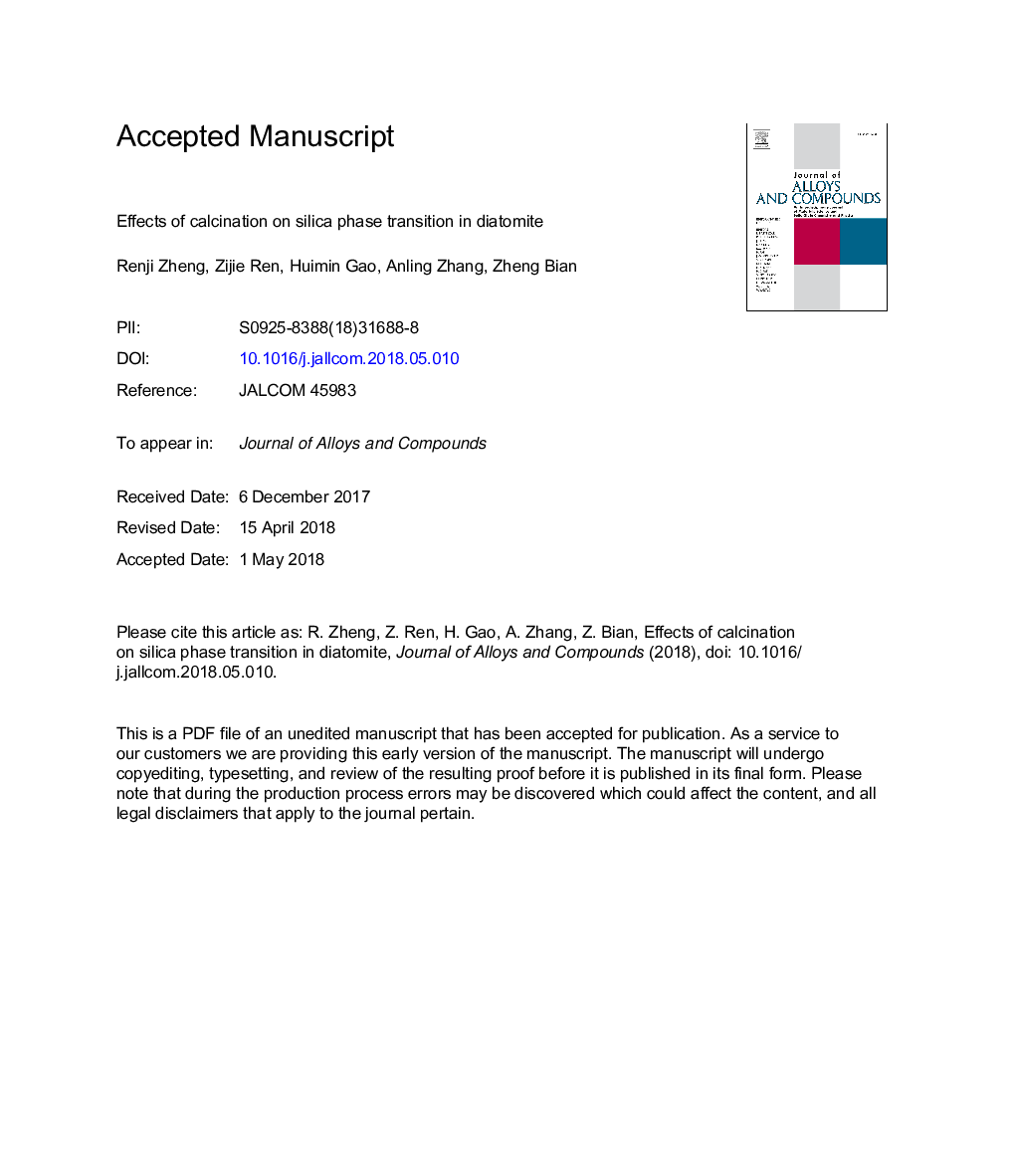| Article ID | Journal | Published Year | Pages | File Type |
|---|---|---|---|---|
| 7991215 | Journal of Alloys and Compounds | 2018 | 15 Pages |
Abstract
Calcination has been a major means for the preparation of diatomite filter aids because it improves the permeability of filter aids. However, the pore structure and silica phase of diatomite could be destroyed or altered during thermal processing, which seriously restrains the properties of diatomite filter aids. In the present work, the calcination of diatomite was carried out to investigate its effect on silica phase transition in diatomite. Diatomite with a certain particle size distribution as raw material was sintered in a muffle furnace at a temperature from 200â¯Â°C to 1200â¯Â°C with or without flux (7â¯wt% Na2CO3). The phase evolution and microstructure of diatomite were investigated by thermal analysis (TG and DSC), X-ray diffraction (XRD), Fourier transform infrared spectroscopy (FT-IR), and transmission electron microscopy (TEM). The results showed that the opal in diatomite began converting to cristobalite at 1000â¯Â°C without flux and the transformation temperature was reduced by 200â¯Â°C by adding flux. In addition, there was about 64.02% content of quartz in diatomite converting to cristobalite as the calcination temperature increased from 1100â¯Â°C to 1200â¯Â°C by flux calcination. It was considered to be a universal phenomenon that the opal in diatomite transformed into cristobalite under high-temperature calcination due to their similar microcrystalline structure. Furthermore, the quartz in raw diatomite was inclined to transform into cristobalite rather than tridymite, mainly owing to the existence of crystal nucleus of cristobalite formed from opal-cristobalite phase transition. The findings in this paper improve understanding of silica phase transition in diatomite upon calcination.
Keywords
Related Topics
Physical Sciences and Engineering
Materials Science
Metals and Alloys
Authors
Renji Zheng, Zijie Ren, Huimin Gao, Anling Zhang, Zheng Bian,
